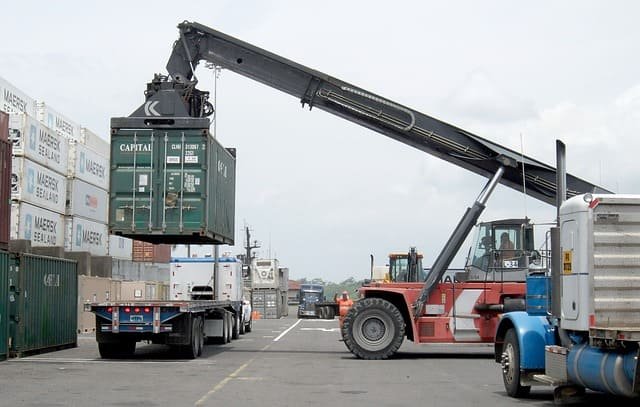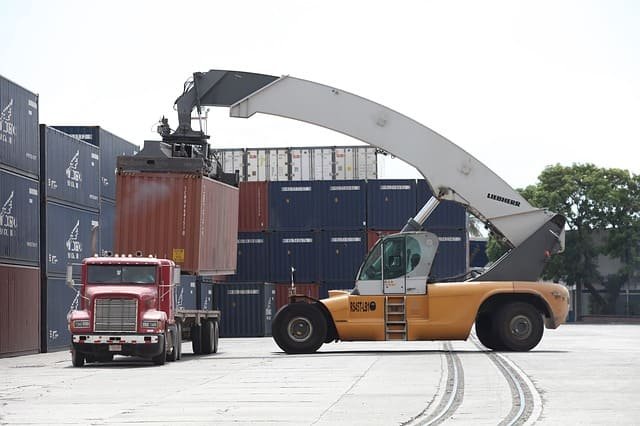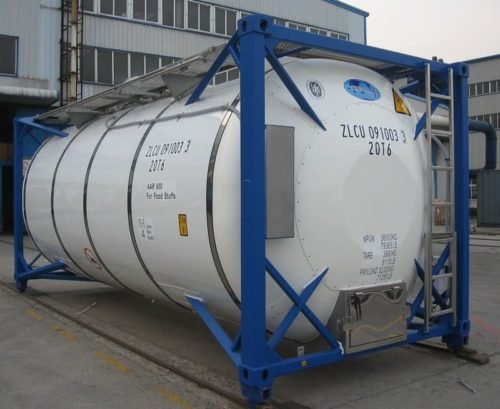Today, we will delve into the fascinating and incredible history of shipping containers, who invented them, and how this marvelous idea came about. Given that shipping containers are everywhere, we often take them for granted in today’s society.
But just go back 60 years when there were no shipping containers or intermodal transportation systems, and you’ll realize they didn’t exist. Today, we explore the history of shipping containers. We’ll delve into what was used before them, how and who invented them, and finally, the impact they’ve had on globalization.
The History of Shipping Containers: Pre-Container Era
For centuries, humanity has traversed the seas, carrying not only themselves but also food, cotton, treasures, and goods like their own country had never seen before. Think about the Egyptians, Greeks, Romans, and more recently, the British! How did they transport their goods around the world?
They were clearly shipped to other countries, but without any standardization, it was a slow and challenging process. Goods would be stored in a port warehouse until a ship became available. When an empty ship did arrive, these goods would be manually transported from the warehouse to the ship’s side.
Goods were typically loaded in sacks, bundles, crates, and barrels, and then hand-loaded onto the ship. As you can imagine, this was a very labor-intensive process. This process was known as break-bulk cargo. A typical ship would have around 200,000 pieces of cargo on board.
By the latter part of the second industrial revolution (early 1900s), this lack of standardization was becoming a real problem, especially considering how advanced trains had become by then.
The transfer of cargo from ships to trains was extremely slow and caused significant delays and bottlenecks in many ports.
Larger ships would take about a week to unload and reload. This was the only way to transport goods, and for centuries, this process remained unchanged.
Who Was Malcom McLean?
There was a great need for a standardized method of transportation, but for this to happen, a whole array of industries needed to align, such as ships, trains, trucks, and port terminals.
As you can imagine, it would take a lot of work and persuasion to make such a feat possible. This is where you discover exactly who Malcom McLean is.
Malcom McLean was born in 1914 and grew up on a farm in North Carolina. After finishing school in 1931, he worked for several years to save enough money to buy a used truck.
In 1934, he launched his transportation business. McLean soon improved his transportation business and had five trucks working for him.
During a routine delivery of cotton bales in 1937, from North Carolina to New Jersey, McLean witnessed the loading and unloading by dockworkers, which took hours and hours. He contemplated what was a waste of time and money.
From 1937 to the early 1950s, McLean focused on his transportation business, which had more than 1,750 trucks and 37 transportation terminals.
In fact, it was the fifth largest trucking business in all of America. During this time period, various weight restrictions and fees were introduced to trucking.
It was not uncommon for McLean’s drivers to be fined for carrying heavy loads. McLean was now looking for a more efficient way to transport his customers’ cargo and remembered his experience in New Jersey in 1937.
It was then that he had the idea of creating a standardized-sized trailer that could be loaded onto ships in volume. Not one or two, like with his trucks, but hundreds.
He envisioned revolutionizing his transportation business by phasing out most of his trucks and using ships to transport the goods to strategically located truck centers.
This would mean that trucks would only be used for short deliveries within the state, eliminating weight restrictions and fees that had been introduced recently.
The Birth of a New Era: Intermodalism

McLean, convinced by his idea of creating a standardized trailer or container, sold his trucking business. In 1955, he took out a bank loan for $42 million. He used $7 million of this loan to buy the established shipping company, Pan-Atlantic Steamship Company.
Pan-Atlantic already had docking rights in many of the East Coast cities McLean was targeting. Shortly after buying them, he renamed the company SeaLand Industries.
McLean then went on to test variations of the container and ultimately settled on a primitive form of what we now know as the shipping container. It was sturdy, standardized, stackable, easy to load and unload, and lockable, making it theft-resistant.
So now McLean had his containers, and the final piece of the puzzle was designing ships that could hold these newly designed containers.
He bought the tanker, Ideal X, and modified it to carry 58 of his new design containers, in addition to 15,000 tons of oil. On April 26, 1956, Ideal X departed from New Jersey and headed to Houston.
The success of his design was evident when the company was taking orders even before the ship docked in Houston to deliver the products to New Jersey.
This was mainly due to McLean’s ability to offer a 25% discount on the cost of conventional cargo transportation at that time. Furthermore, because the containers could be locked, it prevented goods from being stolen during transit.
Expansion of Shipping Containers
Following the success of Ideal X’s inaugural voyage, McLean had the first ship specifically designed to carry containers built: the Gateway City. Gateway City’s maiden voyage was in October 1957, going from New Jersey to Miami.
Incredibly, only two groups of longshoremen were required to unload and load the cargo. The cargo could be moved at an astonishing speed of 30 tons per hour, something unheard of at that time.
Standardization
At this point, McLean was using 33-foot containers, different from the 20 and 40-foot shipping containers we see today. However, the problem of a lack of standardization regarding container size and corner fittings still existed. This standardization was needed so that containers could be efficiently stacked.
Additionally, trains, trucks, and other transport equipment required a standardized container size so that each method of transportation could be built to a single size. During the Vietnam War, the U.S. government was looking for a way to ship goods more efficiently and was pressing for standardization.
McLean’s SeaLand Industries was still using 33-foot containers, while industry rival Matson was using 24-foot containers. McLean agreed to release his patent for the revolutionary corner posts of containers (vital for their strength and stacking), and several standards were agreed upon.
- January 1968: ISO 338 defined terminology, dimensions, and ratings.
- July 1968: ISO 790 defined how containers should be identified.
- October 1970: ISO 1897 defined recognized container sizes.
As a result of these standards, we now have 20 and 40-foot shipping containers (refer to container dimensions for more information).
In fact, 20-foot shipping containers, called Twenty-foot Equivalent Units (TEUs), became the industry standard for referencing cargo volume.
Resistance
The final hurdle to shipping containers worldwide was resistance at ports due to extensive redundancies caused by shipping containers.
Traditionally, the process of loading cargo required many dockworkers to physically handle all the goods to position them.
However, with shipping containers, these dockworkers were no longer needed, which caused outrage among dockworker unions.
In the early 1970s, many unionized workers went on strike, disrupting the shipping industry and the rapid expansion of shipping containers.
However, due to the immense financial savings of container shipping, these unionized workers were paid severance agreements, and container growth skyrocketed.
As a result, by 1970, SeaLand Industries had 36 container ships, twenty-seven thousand containers, and connections to over 30 ports in the United States. McLean later sold the company to RJ Reynolds for $160 million.
Legacy of Containers
It took just ten years for the first international container ship voyage. In April 1966, SeaLand’s Fairland sailed from the U.S. to the Netherlands with a whopping 236 shipping containers on board.
From here, container ships experienced massive expansion, and by 1968, container ships had the capacity to carry around 1,000 TEUs, which was exceptionally large at that time.
Many now claim that shipping containers have been the primary driver of globalization in the past sixty years.
- The cost of shipping cargo has been reduced by over 90%.
- In 1956, shipping cost $5.86 per ton to load, whereas now it costs only around $0.16 per ton.
- In 1966, around 1% of countries had container ports, but this increased to 90% by 1983.
- Malcolm McLean has been awarded the “Man of the Century” by the International Maritime Hall of Fame.
- Pre-containers, cargo could be loaded at around 1.3 tons per hour. This increased to over 30 tons per hour in 1970.
- In 2011, American shipping ports received $1.73 trillion in goods.
- Around 90% of every purchased item has been shipped inside a container.
- There are nearly twenty million containers in the world, making over 200 million trips per year.
- A sweater can now travel 3,000 miles for 2.5 cents by sea.
- There are currently over 6,000 container ships in service.
- The world’s largest container ship, MSC Oscar, has a TEU of 19,224: source.
This history of shipping containers is truly fascinating. No one would imagine that we are now using them to build houses and that they have changed the world so much.
Imagine being able to travel anywhere in the world and use the same type of electrical plug or make purchases with the same currency, things that are being achieved today. Achieving this level of standardization worldwide is very difficult, but that’s exactly what containers have accomplished!
One thing that McLean may not have foreseen was the accumulation of excess containers over time due to trade imbalances. That, and other factors, led pioneers to explore transforming containers into useful buildings in the 1980s.
Today, thanks to the ingenuity of professional designers and ordinary people like you, we have thousands of incredible examples of container structures.
 MAS INFORMACIÓN CLIC AQUÍ Construye Tu Casa con Contenedores Paso a Paso
MAS INFORMACIÓN CLIC AQUÍ Construye Tu Casa con Contenedores Paso a Paso  «Tu casa con contenedores» es la única guía paso a paso que existe para construir tu propia casa con containers desde cero. No importa si no tienes conocimientos sobre construcción, si pensar en ello te da dolor de cabeza, si eres constructor o trabajas en una oficina. La guía está escrita para que cualquiera pueda entenderlo. MAS INFORMACIÓN CLIC AQUÍHágalo Usted Mismo Construye Tu Casa con Contenedores Paso a Paso
«Tu casa con contenedores» es la única guía paso a paso que existe para construir tu propia casa con containers desde cero. No importa si no tienes conocimientos sobre construcción, si pensar en ello te da dolor de cabeza, si eres constructor o trabajas en una oficina. La guía está escrita para que cualquiera pueda entenderlo. MAS INFORMACIÓN CLIC AQUÍHágalo Usted Mismo Construye Tu Casa con Contenedores Paso a Paso



